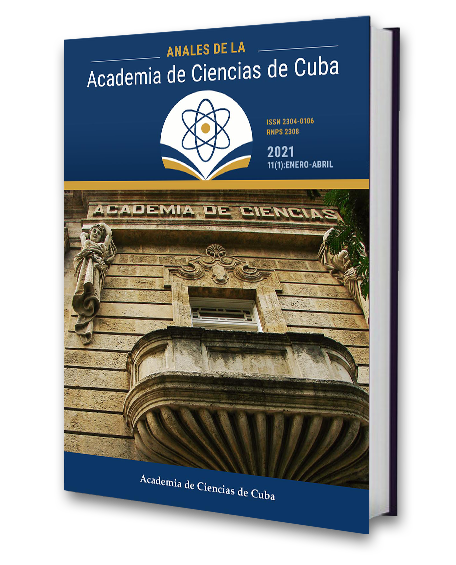Oligosacharins as biostimulants for Cuban agriculture
Keywords:
chitosan, oligogalacturonides, lipo-chitinoligosaccharides, yield, stressAbstract
Introduction: Oligosaccharins are poly and oligosaccharides from plant, microbial and animal origin with biological activity in plants as growth and development promotion and anti-stress protection. However, they can be, also, obtained starting from agricultural by-products and polluting fish wastes present in commercial raw materials.
Methods: In this work, national formulations of oligogalacturonides (from citric pectin), chitosans (from crustacean exoskeletons) and lipochitinoligosaccharides (excreted to the culture medium by Rhizobia).
Results: Increased growth and yield in important crops such as, horticultural (tomato, pepper, cucumber), tubers as potato, and grains as beans. They also enhance plant behavior to afford biotic stress, caused by fungal pathogens (Phytophthora nicotianae) and abiotic stress such as drought, salinity, and heavy metal and they allow reducing chemical fertilization in bean.
Conclusion: Those results achieved, supported the development and registration of three new biostimulants that were introduced and extended among Cuban producers.
Downloads
Downloads
Published
How to Cite
Issue
Section
License
The journal Anales de la Academia de Ciencias de Cuba protects copyright, and operates with a Creative Commons License 4.0 (Creative Commons Attribution-NonCommercial License 4.0). By publishing in it, authors allow themselves to copy, reproduce, distribute, publicly communicate their work and generate derivative works, as long as the original author is cited and acknowledged. They do not allow, however, the use of the original work for commercial or lucrative purposes.
The authors authorize the publication of their writings, retaining the authorship rights, and assigning and transferring to the magazine all the rights protected by the intellectual property laws that govern in Cuba, which imply editing to disseminate the work.
Authors may establish additional agreements for the non-exclusive distribution of the version of the work published in the journal (for example, placing it in an institutional repository or publishing it in a book), with recognition of having been first published in this journal.
To learn more, see https://creativecommons.org






